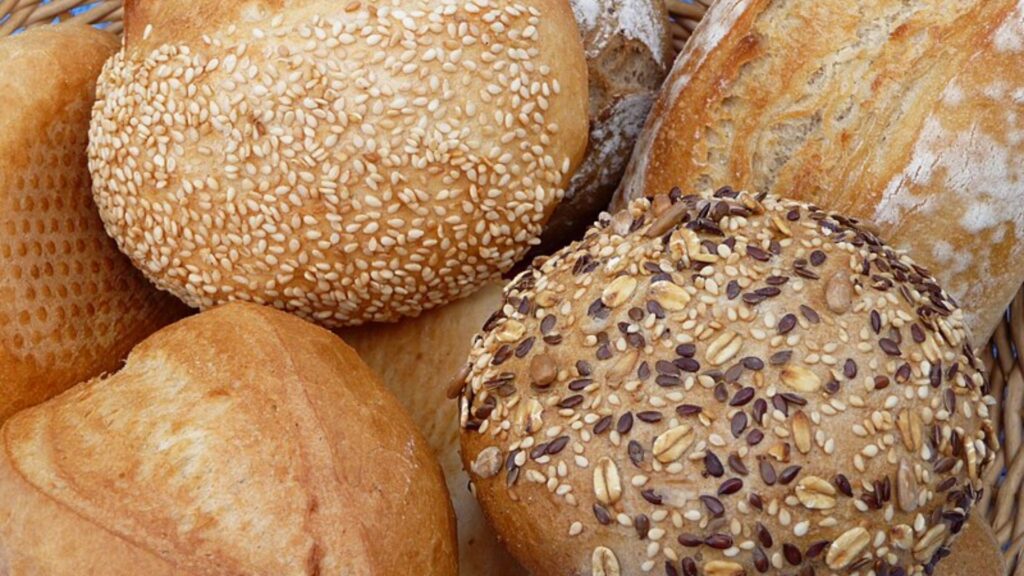
fbooru.net
https://me-encantas.com/2021/05/18/5-consejos-para-hacer-el-mejor-pan” we’ll share essential tips that will transform your loaves from ordinary to extraordinary. Say goodbye to dense, unappetizing bread and hello to crusty exteriors, fluffy interiors, and mouthwatering aromas wafting through your home! Get ready to don your apron as we embark on this flavorful journey together—because there’s nothing quite like the magic of freshly baked bread. Let’s dive into these expert tips that are sure to make every slice a masterpiece!
Introduction to https://me-encantas.com/2021/05/18/5-consejos-para-hacer-el-mejor-pan
There’s something undeniably magical about the smell of freshly baked bread wafting through your home. It’s a sensory experience that can transform an ordinary day into something extraordinary. But while baking bread may seem daunting, it doesn’t have to be! With just a few essential tips, you can elevate your bread-making game and create loaves that are bakery-worthy right in your own kitchen. Whether you’re a seasoned baker or a curious beginner, mastering the art of bread making is within reach. Let’s dive into some invaluable insights to help you craft the perfect loaf every time!
Understanding the Basics of https://me-encantas.com/2021/05/18/5-consejos-para-hacer-el-mejor-pan Bread Making
Bread making is a timeless art that combines science and creativity. At its core, it involves a few essential ingredients: flour, water, yeast, and salt. Each plays a vital role in the transformation process.
Flour provides structure through gluten formation when mixed with water. Yeast acts as the magic ingredient that ferments sugars, creating air pockets that make bread rise. Salt isn’t just for flavor; it regulates yeast activity and strengthens dough.
Understanding these elements lays the groundwork for successful baking. It’s not just about following a recipe but grasping how they interact during each stage of preparation.
Temperature also matters significantly in this process. The right environment ensures optimal yeast performance and dough behavior. This foundational knowledge unlocks countless possibilities for experimenting with flavors and textures in your baking adventures!
Tip #1: Choose the Right Ingredients
Choosing the right ingredients is essential for making exceptional bread. Start with high-quality flour, as it serves as the foundation of your loaf. Look for all-purpose or bread flour that has a higher protein content for better gluten development.
Don’t overlook yeast, either. Fresh yeast can make a world of difference in flavor and rise. If you’re adventurous, try sourdough starter or instant yeast to elevate your baking game.
Water might seem trivial, but its quality matters too. Filtered water without chlorine ensures optimal fermentation and taste.
For those with dietary restrictions, alternative flours like almond or oat can be great substitutes. Just remember they often require adjustments in hydration levels and mixing techniques.
Together, these choices transform simple ingredients into something extraordinary—your perfect loaf awaits!
Importance of high-quality flour, yeast, and water
High-quality flour, yeast, and water are the foundation of any great loaf. Each ingredient plays a crucial role in creating that perfect texture and flavor.
Flour is not just about protein content; it influences the bread’s rise and crumb structure. Choosing organic or freshly milled varieties can enhance taste significantly.
Yeast is the magic behind fermentation. Opt for fresh yeast to ensure your dough rises optimally. It’s all about activating those tiny organisms for airy results.
Water quality matters too. Chlorine-heavy tap water might hinder yeast activity. Using filtered or bottled water ensures a healthier environment for fermentation.
These ingredients come together in harmony, impacting everything from crust color to aroma. Investing time in selecting top-notch components will pay off with each delightful slice you create at home.
Alternative flours for dietary restrictions
Finding alternative flours can be a game changer for those with dietary restrictions. Many options cater to different needs, such as gluten-free or low-carb diets.
Almond flour is a popular choice for gluten-free baking. It’s packed with nutrients and adds a delightful nuttiness to your bread. Just keep in mind that it absorbs moisture differently than wheat flour.
Coconut flour is another excellent option. It’s high in fiber and gives baked goods a subtle sweetness. However, because it’s very absorbent, you’ll need to adjust the liquid content of your recipe accordingly.
For those looking to reduce carbohydrates, consider using flaxseed meal or chickpea flour. Both are rich in protein and lend unique flavors while maintaining texture.
Remember that experimenting with these alternatives may require some tweaks in your recipes, but the results can be deliciously rewarding!
Tip #2: Properly Measure and Weigh Ingredients
Accurate measurements are the backbone of successful bread making. Precision can make or break your loaf, affecting texture, rise, and flavor.
When it comes to flour, for example, a cup can weigh differently depending on how it’s packed. Using a kitchen scale ensures consistency by allowing you to measure ingredients in grams or ounces.
For liquids like water, measuring cups work well but consider using a liquid measuring jug for more accuracy. Remember that even slight variations can lead to disappointing results.
Investing time in learning proper measurement techniques is worthwhile. Techniques such as spooning flour into the cup rather than scooping help maintain accurate amounts.
Every ingredient plays its role; thus, giving attention to detail here sets you up for success. This simple step elevates your baking from ordinary to extraordinary without much extra effort!
Importance of precise measurements in bread making
Precise measurements are the foundation of successful bread making. Even a slight deviation can lead to disappointing results, such as dense or overly dry loaves.
Flour, water, salt, and yeast must be measured accurately. Each ingredient plays a vital role in developing flavor and texture. A little too much flour can absorb excess moisture; too little may leave your dough sticky and unmanageable.
Using a kitchen scale is highly recommended for accuracy. Measuring by weight rather than volume ensures consistency with every batch. This practice becomes especially crucial when experimenting with different recipes or ingredients.
Don’t forget about temperature! Water that’s too hot or cold affects yeast activation and gluten development.
These details might seem small but mastering them transforms ordinary bread into extraordinary creations that you’ll look forward to enjoying time after time.
Tips for accurate measuring and weighing techniques
Accurate measuring and weighing are crucial for perfect bread. A kitchen scale is your best friend here. It provides precise measurements that ensure consistent results.
When measuring flour, fluff it up first with a spoon before scooping into your cup. This prevents packing and gives you the right amount. Level off the top with a straight edge for accuracy.
For liquids, use clear measuring cups with markings on the side. Make sure to check at eye level to avoid miscalculations due to angle distortions.
Don’t forget about the temperature of ingredients! Warm water can activate yeast effectively, while cold might stall its growth.
Investing time in these techniques will pay off when you taste that perfectly baked loaf fresh out of the oven!
Tip #3: Kneading Techniques for Perfect Texture
Kneading is a vital step in bread making that transforms your dough from a sticky mess into a smooth, elastic delight. This process develops gluten, which gives bread its structure and texture.
There are various kneading methods to explore. The classic hand-kneading technique involves pushing the dough away with your palms, then folding it back over itself. It’s an intimate way to connect with your ingredients.
Alternatively, you can use a stand mixer fitted with a dough hook for efficiency. Just remember to keep an eye on the dough; over-kneading can lead to toughness.
Don’t forget about the “stretch and fold” method—perfect for those who want less hands-on time but still crave great results. Simply stretch one side of the dough and fold it towards the center, repeating this around all sides until well combined. Each technique has its charm; try them out!
Why kneading is important in bread making
Kneading is a fundamental step in bread making that transforms simple ingredients into an elastic dough. This process develops gluten, the protein that gives bread its structure and chewy texture.
As you knead, you’re working air into the dough, which helps with fermentation. The trapped air bubbles are essential for creating rise and fluffiness in your final loaf.
Getting this part right can be the difference between dense bread and a light, airy masterpiece. There are various techniques to choose from—like the classic folding method or using a stand mixer—but all aim to achieve that perfect elasticity.
The feel of well-kneaded dough should be smooth and slightly tacky but not sticky. Mastering this technique elevates your baking game, ensuring each slice is just as delightful as the last one.
Different methods for kneading dough
Kneading dough is a vital step that transforms simple ingredients into something special. There are several methods you can explore.
The classic method involves using your hands. Simply push the dough away with the heel of your hand, then fold it back over itself. Repeat this for about 10 minutes until smooth and elastic.
If you prefer less manual labor, consider using a stand mixer. Attach the dough hook and let it do the work for you while you attend to other tasks in the kitchen.
Another option is stretch-and-fold technique, popular among artisan bakers. Instead of traditional kneading, gently stretch the dough at intervals during its initial rise. This helps develop gluten without excessive handling.
Lastly, no-knead bread relies on time rather than force. By allowing longer fermentation periods, flavors deepen and texture improves naturally without intensive kneading efforts. Each method brings out unique characteristics in your final bread product.
Tip #4: Mastering the Art of Proofing
Proofing is the magical moment when dough transforms. It’s where yeast works its wonders, making your bread light and airy.
Understanding proofing time and temperature is essential. Too short, and your bread may turn out dense. Too long can lead to an over-proofed disaster.
Ideal conditions are warm but not too hot—around 75°F to 85°F (24°C to 29°C) works best. A cozy kitchen corner or a turned-off oven with a bowl of hot water can create just the right environment.
Watch for visual cues: dough should double in size and feel puffy when ready. If you gently poke it, the indentation should slowly spring back.
Experimentation enhances skills. Don’t hesitate to adjust times based on humidity or altitude in your area. Each batch offers new insights into perfecting this vital step of bread-making artistry.
What is proofing and why it’s crucial in bread making
Proofing, also known as fermentation, is a fundamental step in bread making. This process allows the yeast to activate and produce carbon dioxide gas. As the dough rises, it develops flavor and texture.
During proofing, gluten strengthens and expands. This gives your bread that perfect airy structure we all love. The right balance of time and temperature can make or break your loaf.
Too short a proof may result in dense bread, while over-proofing can lead to collapse. Watching your dough closely is key; it should double in size but not exceed its limits.
Finding an ideal environment for proofing is essential too. A warm spot helps speed up the process without compromising quality. Experiment with different conditions until you discover what works best for you—your own unique touch will shine through!
Tips for proper proofing time and temperature
Proofing is a critical step in bread making that allows the dough to rise and develop flavor. Getting it right can make all the difference.
The ideal proofing temperature typically hovers around 75°F to 80°F. Warmer temperatures speed up fermentation, while cooler ones slow it down. Adjust your environment accordingly; if it’s too chilly, consider placing your dough in an oven with just the light on.
Timing also plays a crucial role. A general rule of thumb is to let the dough double in size, which usually takes about one hour but can vary based on conditions. Keep an eye on your dough rather than relying solely on a clock.
Creating humidity can enhance results as well. A simple trick is to place a bowl of hot water near your rising bread for added moisture, which helps create a perfect airy texture once baked. Enjoy experimenting!
When it comes to making the best bread, understanding each step is crucial. Every detail matters, from selecting your ingredients to kneading techniques and proofing times. By following these tips, you are well on your way to creating delicious loaves that will impress family and friends alike.
Experiment with different flavors and textures as you grow more comfortable in the kitchen. Bread making can be both an art and a science; find joy in the process. Each loaf tells a story of your creativity and effort.
Remember, practice makes perfect. Don’t be discouraged by initial failures—embrace them as learning opportunities. With patience and dedication, you’ll master the craft of bread making.
So roll up those sleeves, get baking, and enjoy every moment spent with flour-dusted hands! Your journey toward exceptional homemade bread starts now.
Read More: https://me-encantas.com/2021/05/18/5-consejos-para-hacer-el-mejor-pan






